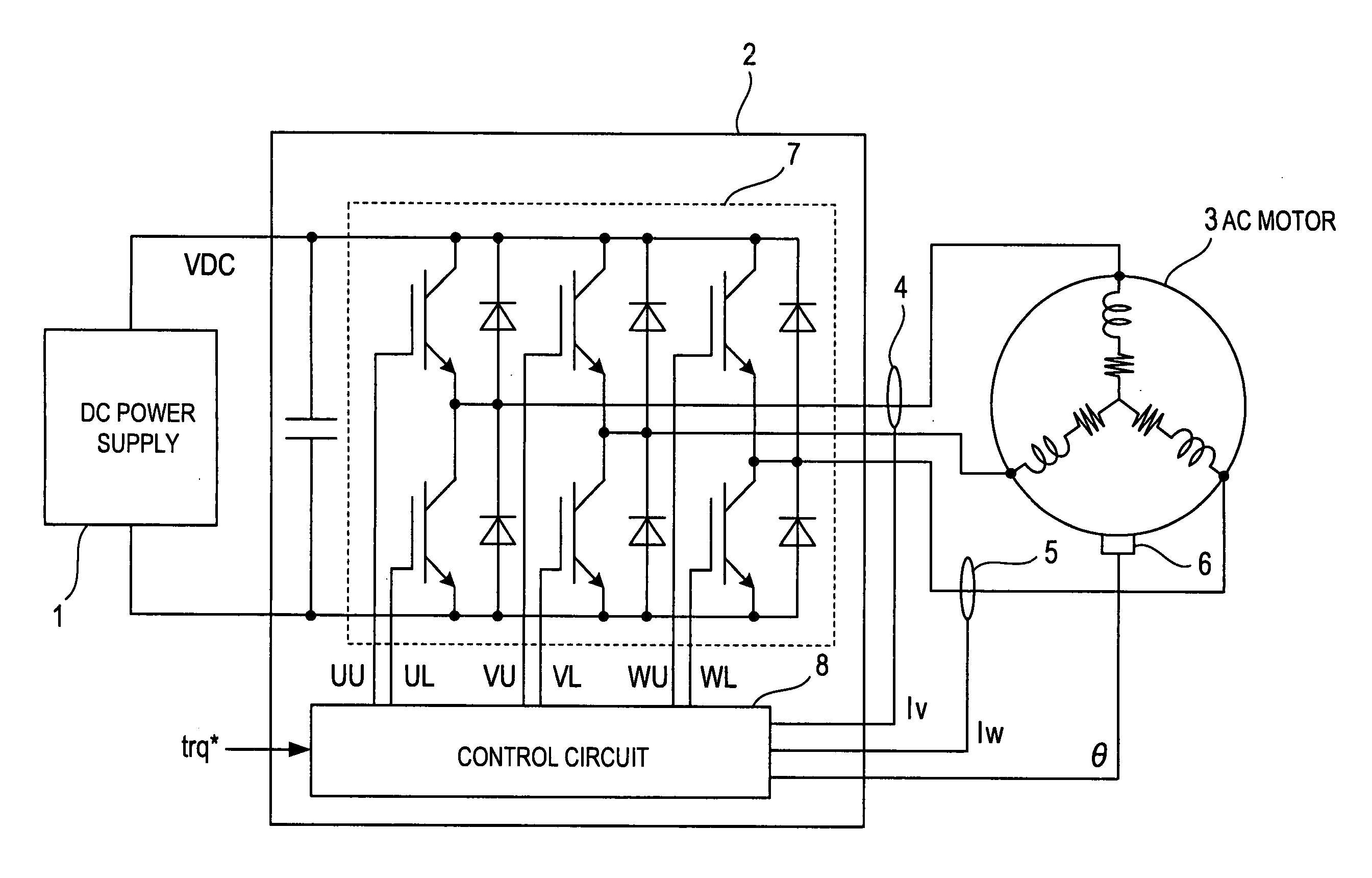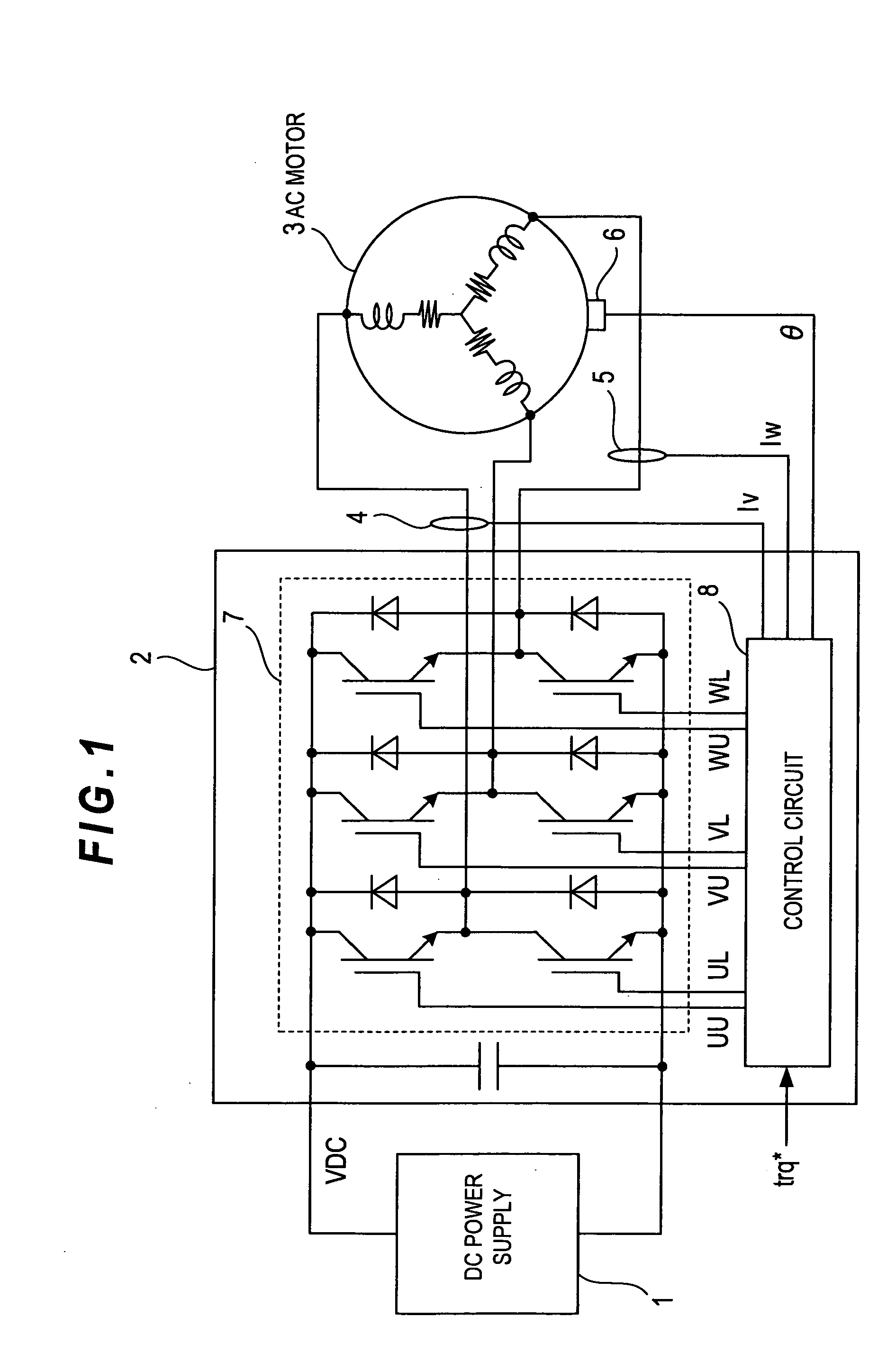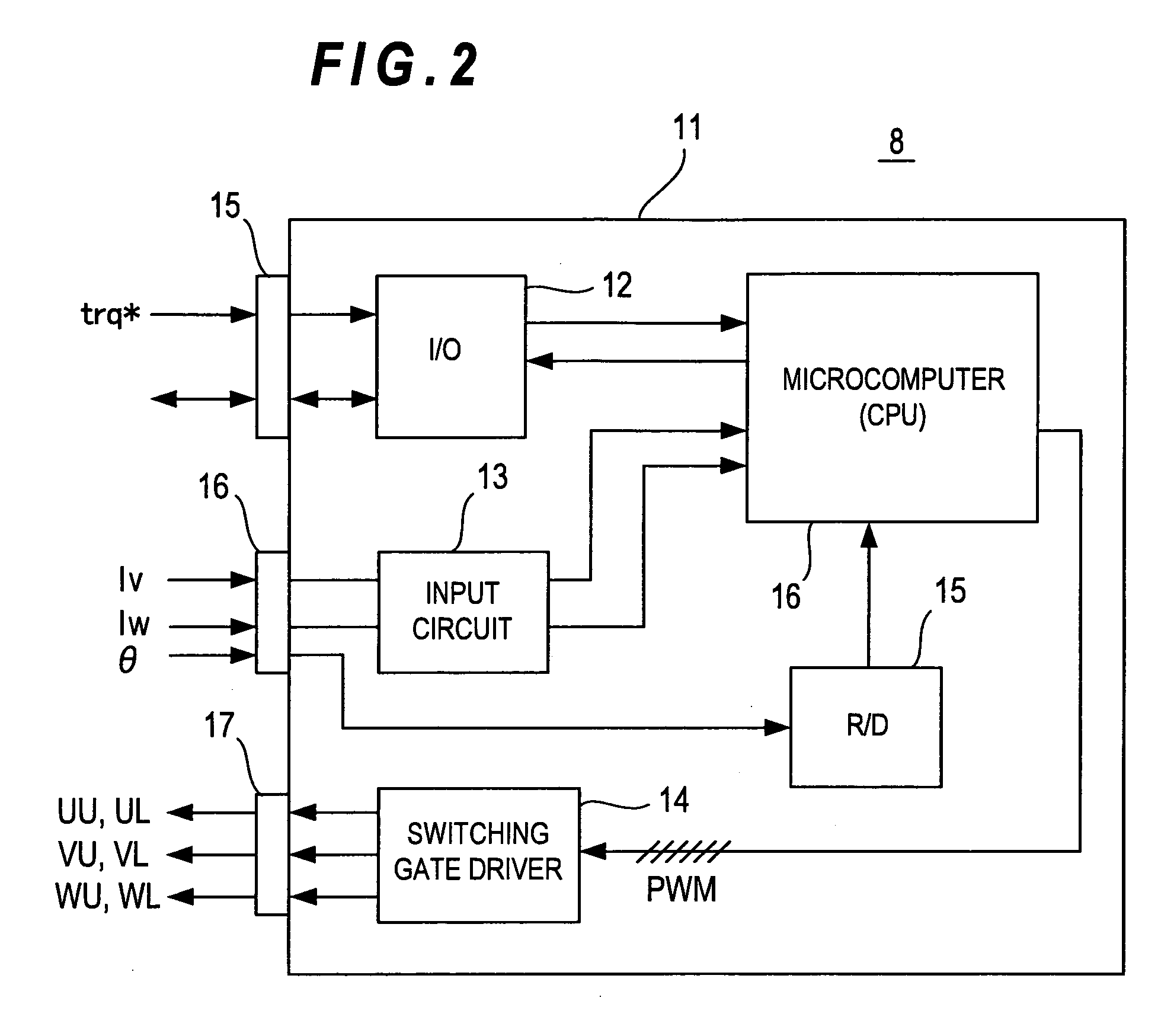Apparatus for controlling three-phase AC motor on two-phase modulation technique
a technology of alternating current and three-phase ac, which is applied in the direction of electronic commutation motor control, motor/generator/converter stopper, dynamo-electric converter control, etc., can solve the problems of insufficient “2/3-fixing type” and insufficient control of the two-phase modulation operation of the motor, and achieve the effect of reducing the switching loss
- Summary
- Abstract
- Description
- Claims
- Application Information
AI Technical Summary
Benefits of technology
Problems solved by technology
Method used
Image
Examples
first embodiment
[0047] (First Embodiment)
[0048] Referring to FIGS. 1-10, a first embodiment of a motor control apparatus according to the present invention will now be described.
[0049]FIG. 1 outlines the electric configuration of a motor apparatus, which includes the motor control apparatus according to the present embodiment. As shown, the motor apparatus is provided with a DC (direct current) power supply 1, driver 2, and three-phase AC synchronous motor 3, in addition to two current sensors 4 and 5 and motor rotation sensor 6. The motor 3 is for example an on-vehicle motor producing power for running a vehicle such as hybrid car.
[0050] Of these, the current sensors 4 and 5 are in charge of detecting signals indicative of phase currents. The motor-rotation sensor 6 is in charge of detecting a signal to show an electrical angle indicative of the rotation of the motor 3 and which serves as motor rotational position detecting means.
[0051] The driver 2 is equipped with an inverter 7 and a control ...
first modification
[0084] (First Modification)
[0085] A first modification relates to a further control of the inverter 7. To be specific, all the three lower arm elements are switched on, while all the three upper arm elements are switched off. That is, the control circuit 8 is designed to operate on a flowchart roughly shown in FIG. 11, in which the determination whether or not an inverter stop command has been read in is made (step S11). When this determination is YES, the inverter 7 is made to stop operating (step S12). Then all the lower arm elements are switched on and all the upper arm elements are switched off (step 813).
[0086] Accordingly, in the bootstrap circuit shown in FIG. 8, ting on all the lower arm elements 101 enables the voltage VN of the power supply 104 to quickly charge the capacitor 103, the power supply 104 powering the driver circuit for driving the lower arm elements 101 and the capacitor 103 powering the driver circuit 100 for driving the upper arm elements 102. This quick c...
second modification
[0087] (Second Modification)
[0088] A second modification relates to another control of the inverter 7. FIG. 12 outlines a flowchart on which the inverter 7 is controlled by the control circuit 8. Specifically, as shown therein, it is determined whether or not the inverter 7 has been actuated, by detecting an inverter actuation command (step 821). If it is determined YES, all the upper arm elements are switched on and all the lower arm elements are switched off (step S22). This arm element control continues for a predetermined period of time after activating the inverter 7 (step S23).
[0089] This control of the upper and lower arm elements 102 and 101 results in that, for only the predetermined period of time immediately after the activation of the inverter 7, the capacitor 103 is charged. Like the first modification, in the bootstrap circuit shown in FIG. 8, turning on all the lower arm elements 101 enables the voltage VN of the power supply 104 to quickly charge the capacitor 103. ...
PUM
 Login to View More
Login to View More Abstract
Description
Claims
Application Information
 Login to View More
Login to View More - R&D
- Intellectual Property
- Life Sciences
- Materials
- Tech Scout
- Unparalleled Data Quality
- Higher Quality Content
- 60% Fewer Hallucinations
Browse by: Latest US Patents, China's latest patents, Technical Efficacy Thesaurus, Application Domain, Technology Topic, Popular Technical Reports.
© 2025 PatSnap. All rights reserved.Legal|Privacy policy|Modern Slavery Act Transparency Statement|Sitemap|About US| Contact US: help@patsnap.com



